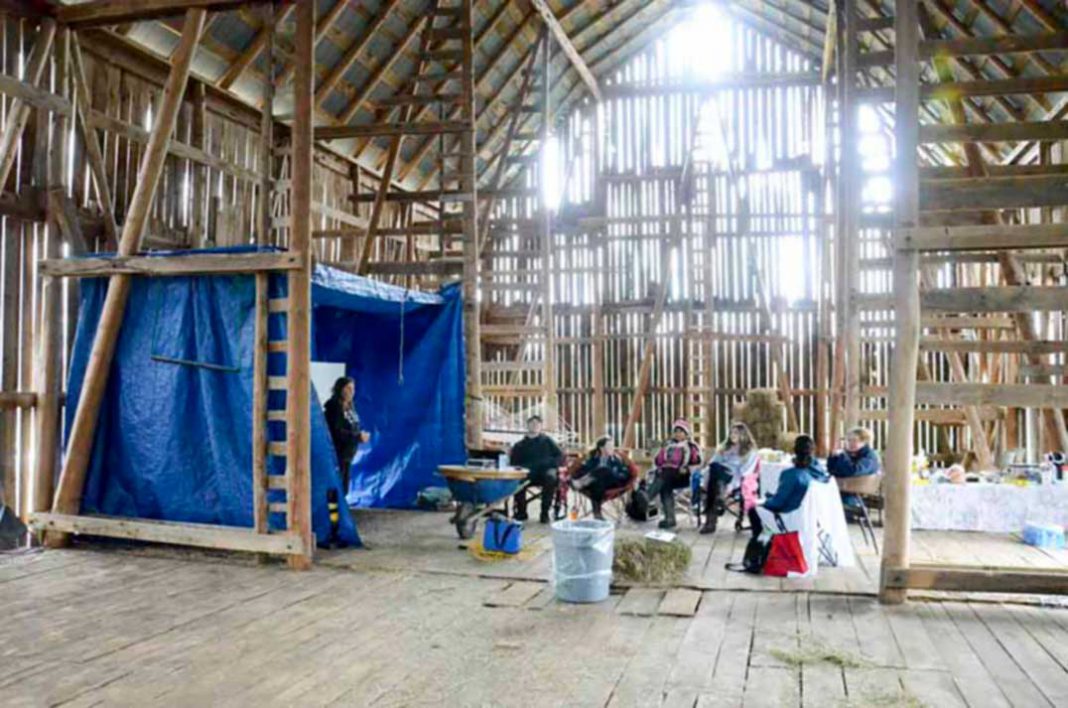MANITOWANING—Understanding the basics of equine first aid, how to triage and apply a first response to a horse’s injury is an important part of the care and keeping of horses and ponies. Help can be a long way off if you are out on a trail ride or your horse is some distance from the veterinarian.
Equine first aid instructor Denise Pisarski of London held an equine first aid course at Sylvia Moggy’s Red Willow Ranch on Highway 6 near Manitowaning on Saturday, May 6 for members of the Manitoulin Light Horse Club.
During the course, students discovered the key rules of first aid, to wit: don’t panic; identify the problem, assess the three Bs in priority order, breathing, bleeding and body; implement action such as getting horse and humans out of danger, stop bleeding, minimize shock and take vital signs, contact vet; and then reassess.
The three Cs outline priorities for wounds: clean the wound; clot by applying a pressure pad, keep the horse calm and maintain pressure; and cover, remember to use a sterile wound dressing if you are bandaging to hold some wound gel in place, then bandage appropriately.
Ms. Moggy doesn’t board horses, as such, or run a commercial stable. For her it is all about the love of horses and the club. “I really think this was something that would be good for members of the club,” she said. “Knowing how to provide first aid for your horse is very important and this seemed like a great way to learn.”
Ms. Pisarski is a certified Equi-Health Canada first aid instructor. Equi-Health Canada is an international organization dedicated to helping horse owners and lovers improve the health and safety of horses by providing emergency first aid training to individuals, clubs and organizations across Canada and the United States and further. In order to hold the SR certification, an instructor must have at least three years of experience and maintain their certifications each year.
“Equine First Aid is the first available treatment available to a horse before a veterinarian can attend to the animal,” said Ms. Pisarski. “The program was born over a decade ago, with the vision of educating horse owners in emergency first aid and providing quality training and products in this area. Developed by veterinarians in conjunction with farriers, equine chiropractors, equine massage therapists, back country outfitters and numerous other horse experts, the courses and products provided are recognized across the continent and beyond.”
During the course, students learned through both hands-on and in-classroom instruction. A small paddock held several different breeds of horses (palomino, thoroughbred, quarter horse and even a miniature horse). For the classroom instruction, a temporary multimedia classroom was set up within the barn, complete with a well-stocked snack table and a hearty lunch of chili.




